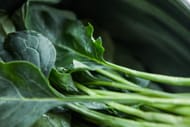Including sources of potassium in your diet is extremely beneficial, especially for people suffering from high blood pressure or hypertension.
When you consume more potassium, the body excretes more sodium. Potassium's ability to reduce tension in blood vessel walls contributes to its effectiveness in bringing blood pressure down.
It's recommended that adults with blood pressure over 120-80, who're otherwise healthy, increase their dietary potassium intake. Those with kidney disease or any condition that affects how the body handles potassium, and those taking specific medications should avoid consuming too much potassium. You should talk with your doctor about whether or not you need to take extra potassium.
Best Food Sources of Potassium

Daily potassium requirements for the average adult are 4,700 mg. Fruits, vegetables, fat-free or low-fat (1%) dairy foods, and fish are all staples of the DASH (Dietary Approaches to Stop Hypertension) eating plan, and act as good sources of potassium.
Half a cup of plain mashed sweet potatoes has 475 milligrams of potassium, and a medium banana has about 420 milligrams. Listed below are some fruits and vegetables with high potassium.
- Fruits such as bananas, oranges, cantaloupe, honeydew, apricots, and grapefruit (some dried fruits, such as prunes, raisins, and dates, are also high in potassium)
- Cucumbers
- Potatoes
- Mushrooms
- Sweet potatoes
- Cooked broccoli
- Peas
- Leafy greens
- Zucchini
- Cooked spinach
- Pumpkins

These fruit juices are some of the best sources of potassium:
- Apricot juice
- Orange juice
- Prune juice
- Tomato juice
- Grapefruit juice
Different types of fish are also known to be good sources of potassium.
- Tuna
- Rockfish
- Halibut
- Trout
- Cod
Check out some of the other foods containing potassium below.
- Lentils
- Lima beans
- Soybeans
- Pinto beans
- Kidney beans
- Salt substitutes
- Molasses
- Bran cereal
- Whole-wheat bread and pasta
- Nuts
- Meat and poultry
- Brown and wild rice
To know more, check out these foods that are loaded with potassium.
Can you Have Too Much Potassium?

As there're many sources of potassium that are commonly eaten foods, it may be possible for you to have high potassium levels.
Individuals with kidney disease should avoid consuming excessive amounts of potassium. Too much potassium in the blood can be dangerous, as the kidneys are less efficient at filtering it out.
Like high blood pressure, high potassium levels often have few noticeable symptoms (hyperkalemia). Excessive potassium can cause nausea, vomiting, a weak or irregular pulse, and even fainting.
Before taking a potassium supplement, it's best to talk to a doctor. Salt substitutes, which can increase potassium in people with certain health conditions and in those taking ACE inhibitors for high blood pressure, should be used with caution, and a doctor's approval should be sought before their use.
What Does Potassium Do?

After learning all about the sources of potassium, it's time for you to understand the role of potassium in lowering blood pressure. There're two ways in which it achieves:
- First, potassium aids the kidneys in flushing excess sodium out of the body via urine. As excess sodium is linked to hypertension, this is a positive development.
- Second, potassium aids in the loosening of your blood vessel walls. High blood pressure, which can cause heart problems, is a direct result of tension and rigidity. The heart benefits from getting enough potassium.
Potassium is also essential for proper muscle function, such as when you flex or contract your muscles. It's also essential for healthy nerve function. For more information, read this article on why potassium is good for you.
